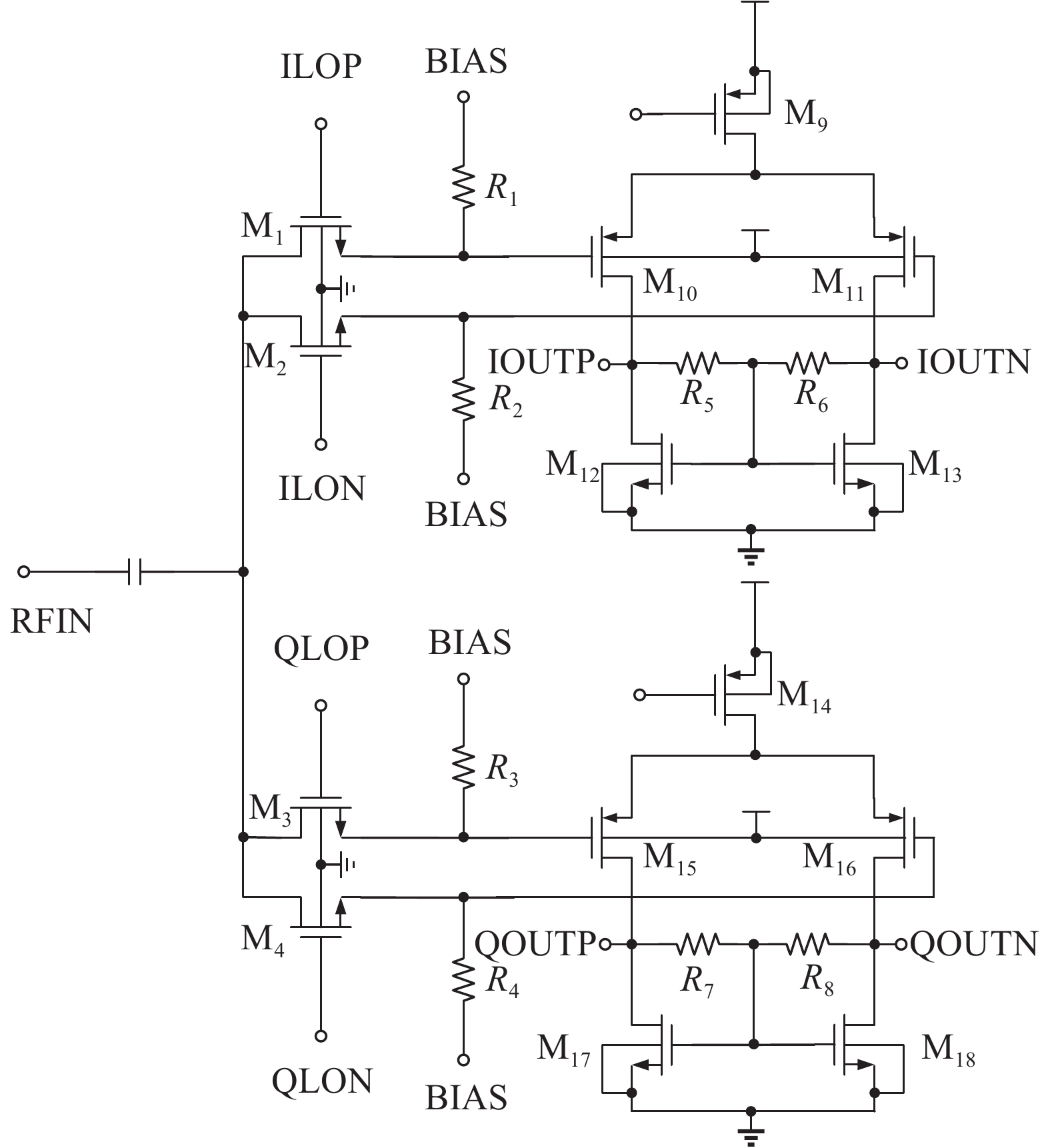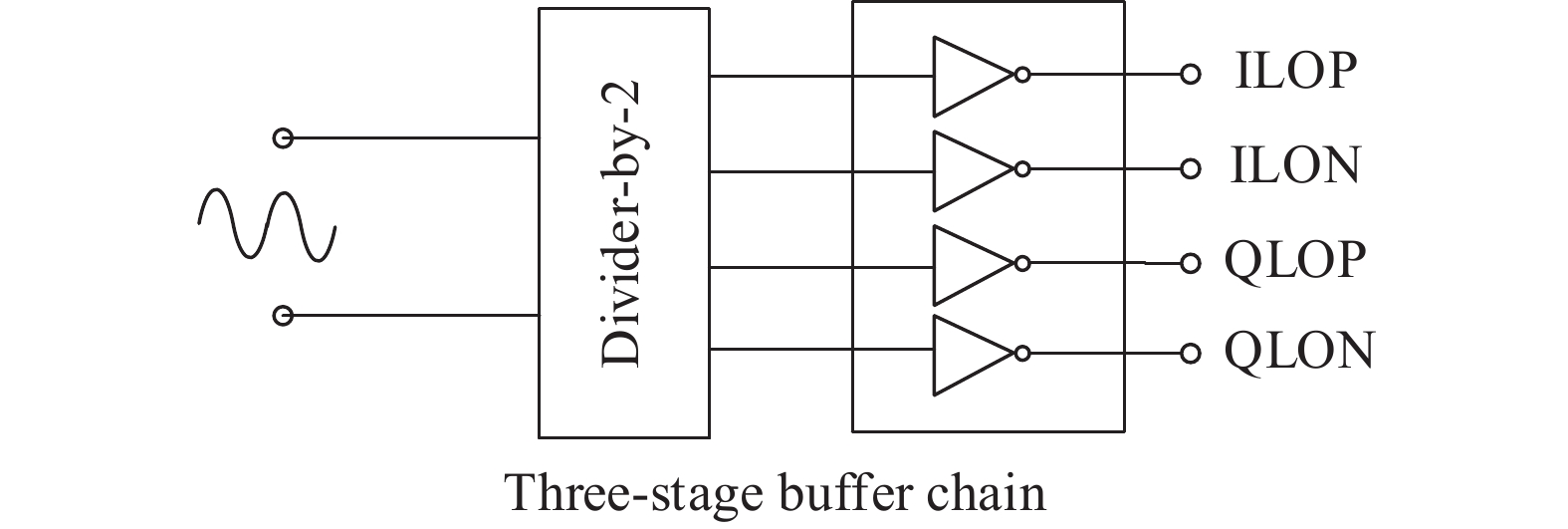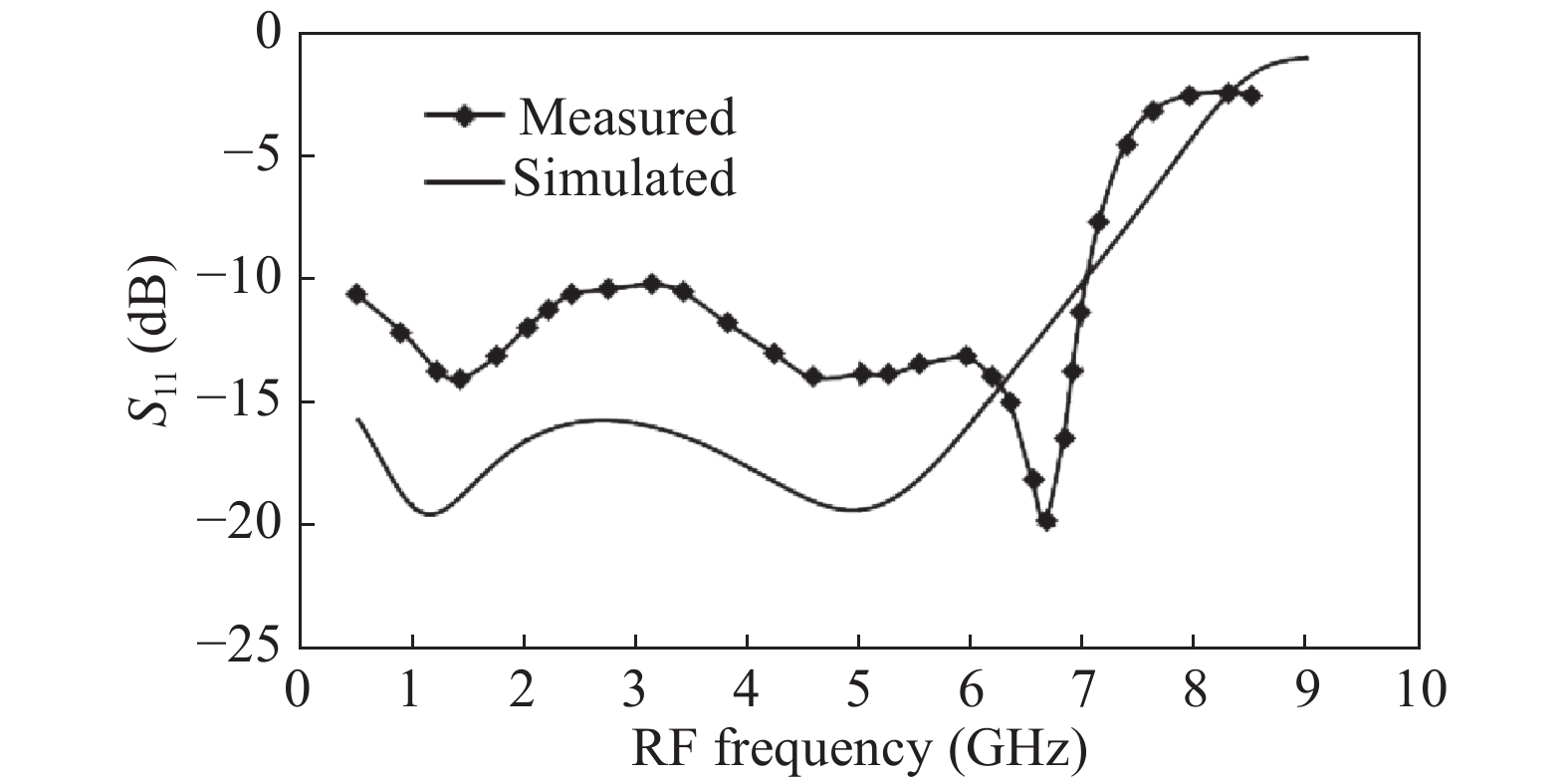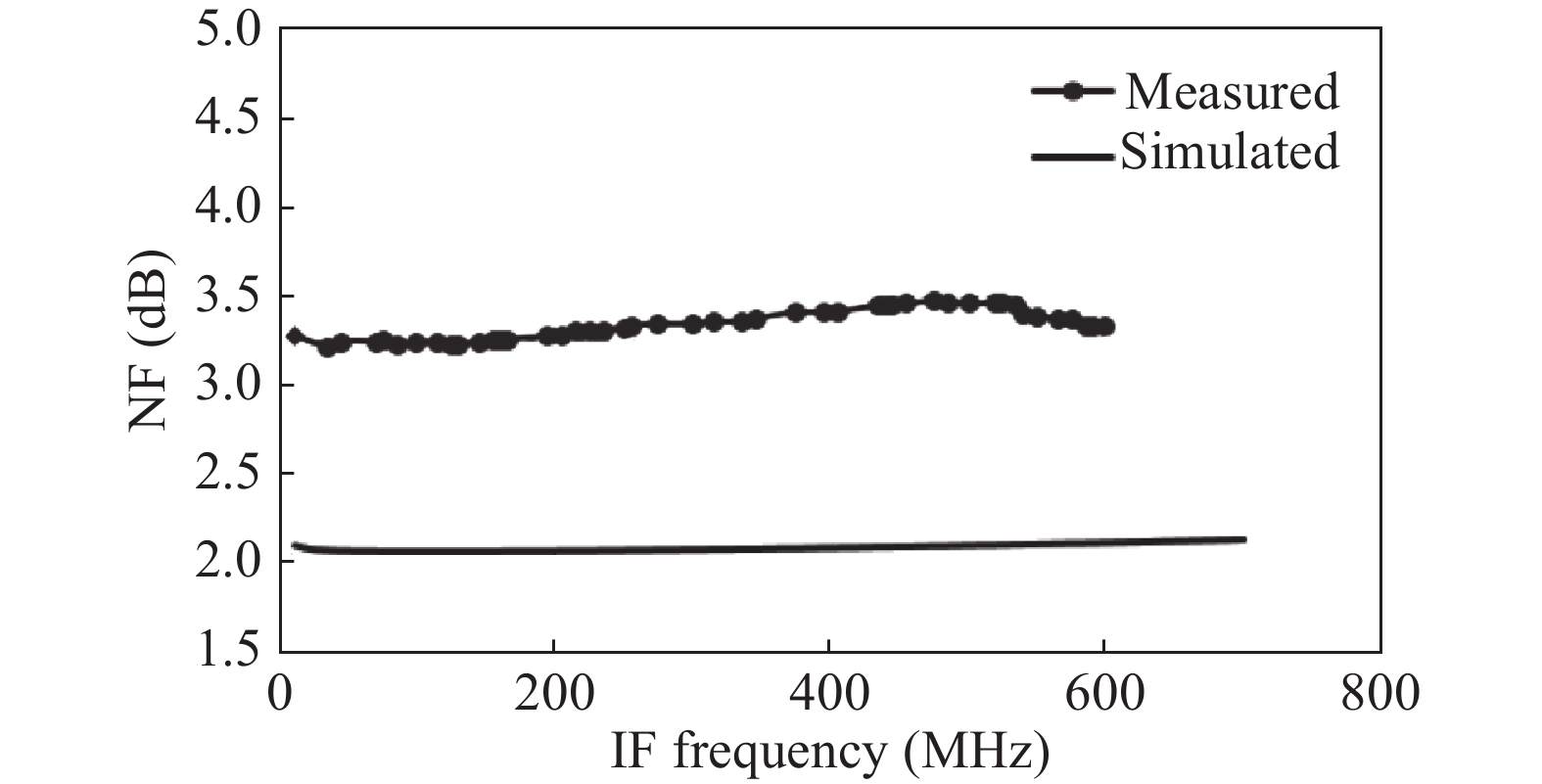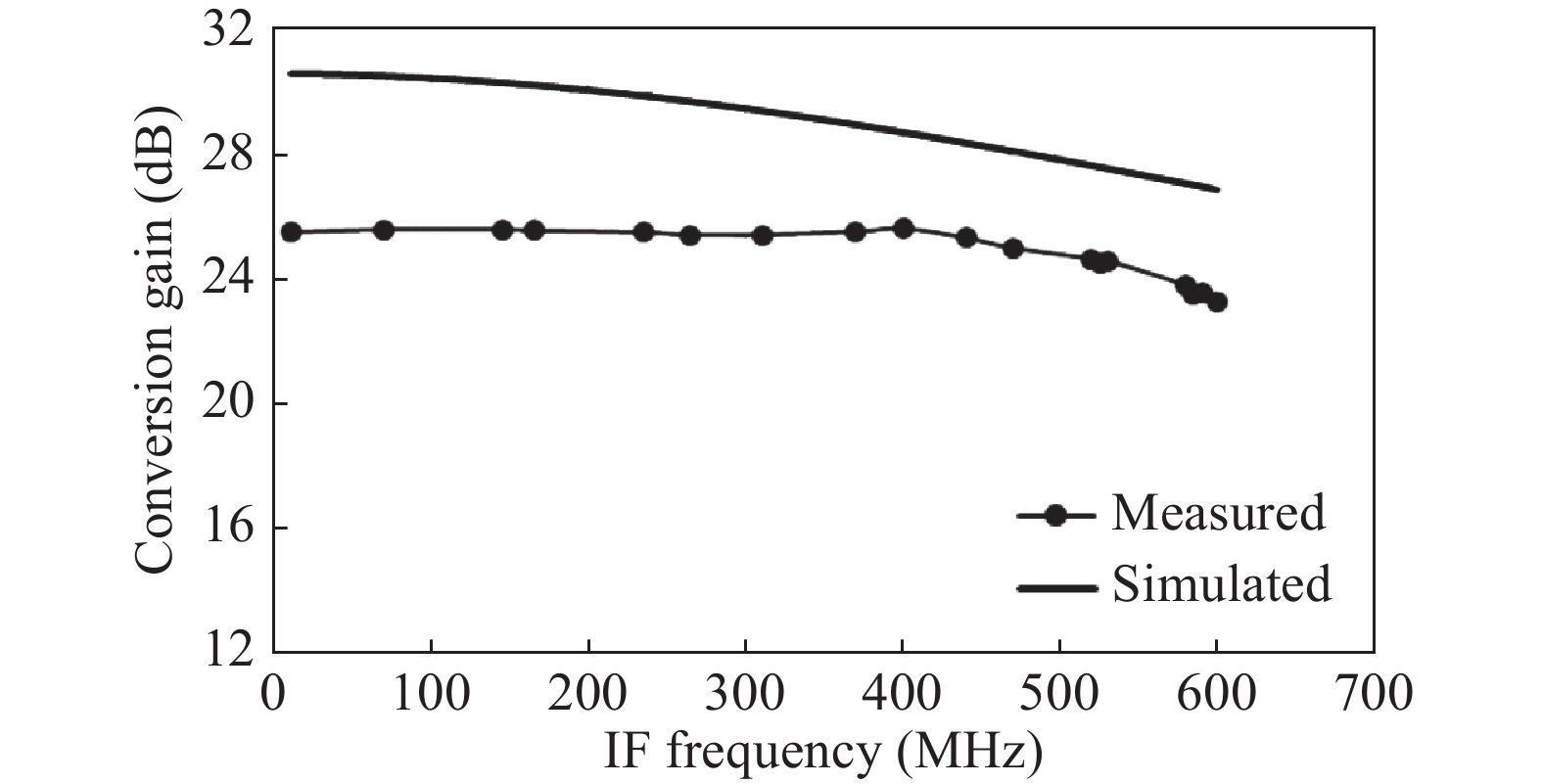| Citation: |
Youming Zhang, Lijuan Yang, Fengyi Huang, Nan Jiang, Xuegang Zhang. A 0.7–7 GHz wideband reconfigurable receiver RF front-end in CMOS[J]. Journal of Semiconductors, 2018, 39(8): 085003. doi: 10.1088/1674-4926/39/8/085003
****
Y M Zhang, L J Yang, F Y Huang, N Jiang, X G Zhang, A 0.7–7 GHz wideband reconfigurable receiver RF front-end in CMOS[J]. J. Semicond., 2018, 39(8): 085003. doi: 10.1088/1674-4926/39/8/085003.
|
A 0.7–7 GHz wideband reconfigurable receiver RF front-end in CMOS
DOI: 10.1088/1674-4926/39/8/085003
More Information
-
Abstract
A 0.7–7 GHz wideband RF receiver front-end SoC is designed using the CMOS process. The front-end is composed of two main blocks: a single-ended wideband low noise amplifier (LNA) and an in-phase/quadrature (I/Q) voltage-driven passive mixer with IF amplifiers. Based on a self-biased resistive negative feedback topology, the LNA adopts shunt-peaking inductors and a gate inductor to boost the bandwidth. The passive down-conversion mixer includes two parts: passive switches and IF amplifiers. The measurement results show that the front-end works well at different LO frequencies, and this chip is reconfigurable among 0.7 to 7 GHz by tuning the LO frequency. The measured results under 2.5-GHz LO frequency show that the front-end SoC achieves a maximum conversion gain of 26 dB, a minimum noise figure (NF) of 3.2 dB, with an IF bandwidth of greater than 500 MHz. The chip area is 1.67 × 1.08 mm2.-
Keywords:
- wideband LNA,
- resistive-feedback,
- CMOS,
- passive mixer
-
References
[1] Wang X, Sturm J, Yan N, et al. 0.6–3-GHz wideband receiver RF front-end with a feedforward noise and distortion cancellation resistive-feedback LNA. IEEE Trans Microwave Theory Tech, 2012, 60(2): 387 doi: 10.1109/TMTT.2011.2176138[2] Zhou H M, Zhang Y, Yu Y, et al. Analysis and design of a 3.1-10.6 GHz wideband low-noise amplifier using resistive feedback. IEEE International Conference on Ubiquitous Wireless Broadband (ICUWB), 2016: 1[3] Cho K F, Wang S. A 0.4–5.3 GHz wideband LNA using resistive feedback topology. IEEE MTT-S International Conference on Numerical Electromagnetic and Multiphysics Modeling and Optimization (NEMO), 2016: 1[4] Zhang X G, Yang L J, Huang F Y. A 0.3–6 GHz broadband noise cancelling low noise amplifier. International Conference on Integrated Circuits and Microsystems (ICICM), 2016: 144[5] Morena-Álvarez-Palencia C D L, Burgos-García M. Broadband RF front-end based on the six-port network architecture for software defined radio. 2010 Milcom Military Communications Conference, 2010: 2137[6] Adiseno I, Ismail M, Olsson H. A wide-band RF front-end for multiband multistandard high-linearity low-IF wireless receivers. IEEE J Solid-State Circuits, 2002, 37(9): 1162[7] Wang C, Li Z Q, Li Q, et al. A broadband 47–67 GHz LNA with 17.3 dB gain in 65-nm CMOS. J Semicond, 2015, 36(10): 105010 doi: 10.1088/1674-4926/36/10/105010[8] Chang T, Chen J, Rigge L A, et al. ESD-protected wideband CMOS LNAs using modified resistive feedback techniques with chip-on-board packaging. IEEE Trans Microwave Theory Tech, 2008, 56(8): 1817 doi: 10.1109/TMTT.2008.927301[9] Chen M Q, Lin J S. A 0.1–20 GHz low-power self-biased resistive-feedback LNA in 90 nm digital CMOS. IEEE Microwave Wireless Compon Lett, 2009, 19(5): 323 doi: 10.1109/LMWC.2009.2017608[10] Liu L, Zhang K, Ren Z, et al. 0.05–2.5 GHz wideband RF front-end exploiting noise cancellation and multi-gated transistors. IEEE Asia-Pacific Microwave Conference, 2015: 1[11] Qiu L, Liu S, Zhang Y, et al. A 0.9–2.6 GHz cognitive radio receiver with spread spectrum frequency synthesizer for spectrum sensing. IEEE Sens J, 2017, 17(22): 7569 doi: 10.1109/JSEN.2017.2760339[12] Wu L, Ng A W L, Zheng S, et al. A 0.9–5.8-GHz software-defined receiver RF front-end with transformer-based current-gain boosting and harmonic rejection calibration. IEEE Trans Very Large Scale Integr (VLSI) Syst, 2017, 25(8): 2371 doi: 10.1109/TVLSI.2017.2695719 -
Proportional views





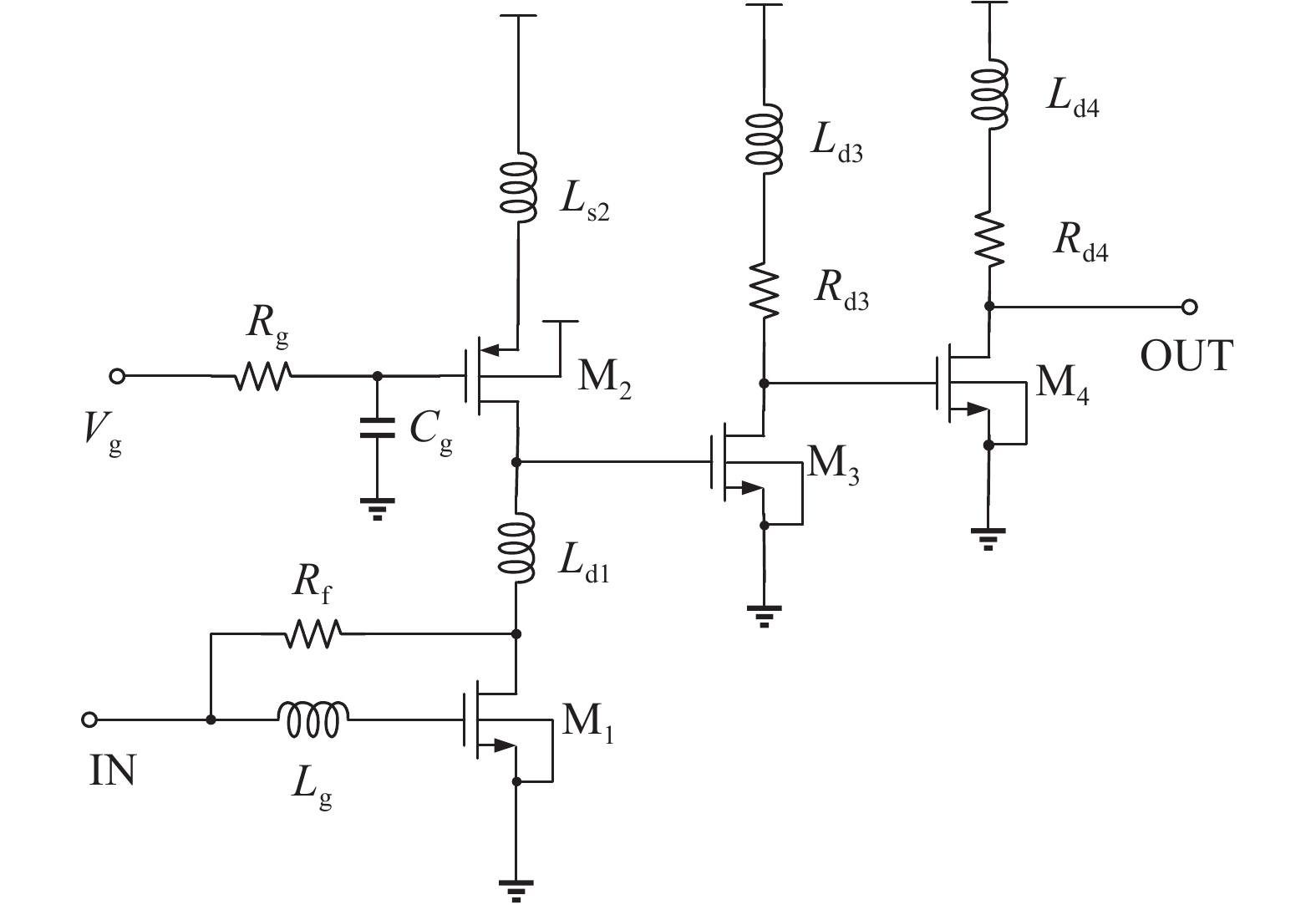
 DownLoad:
DownLoad:

